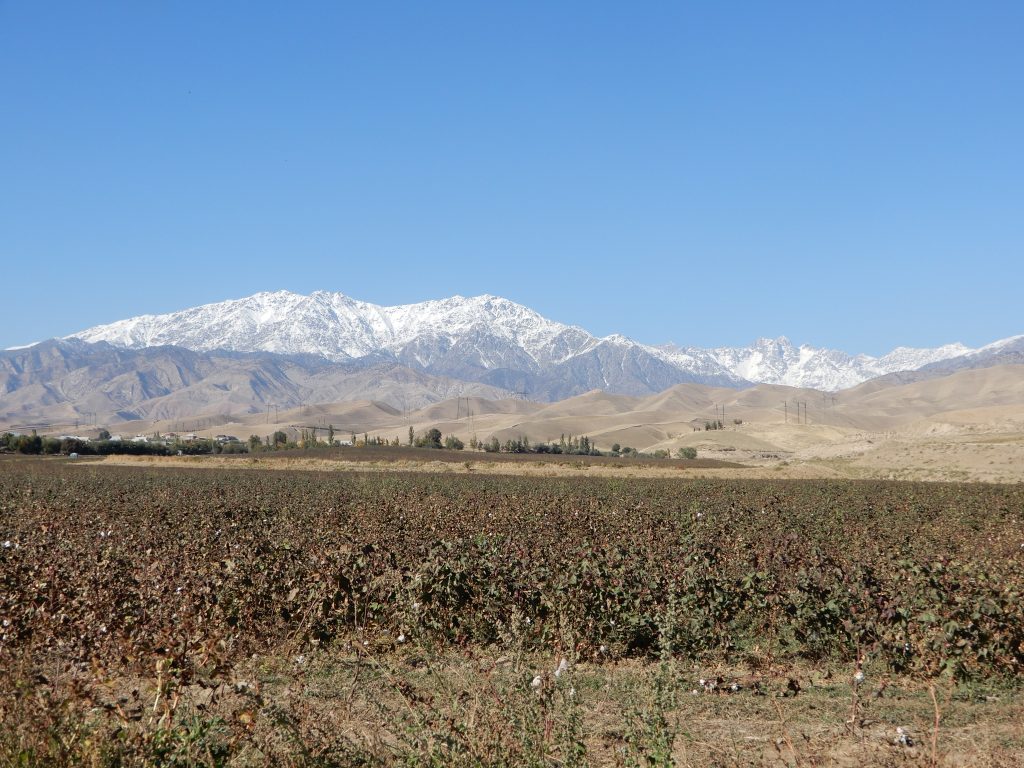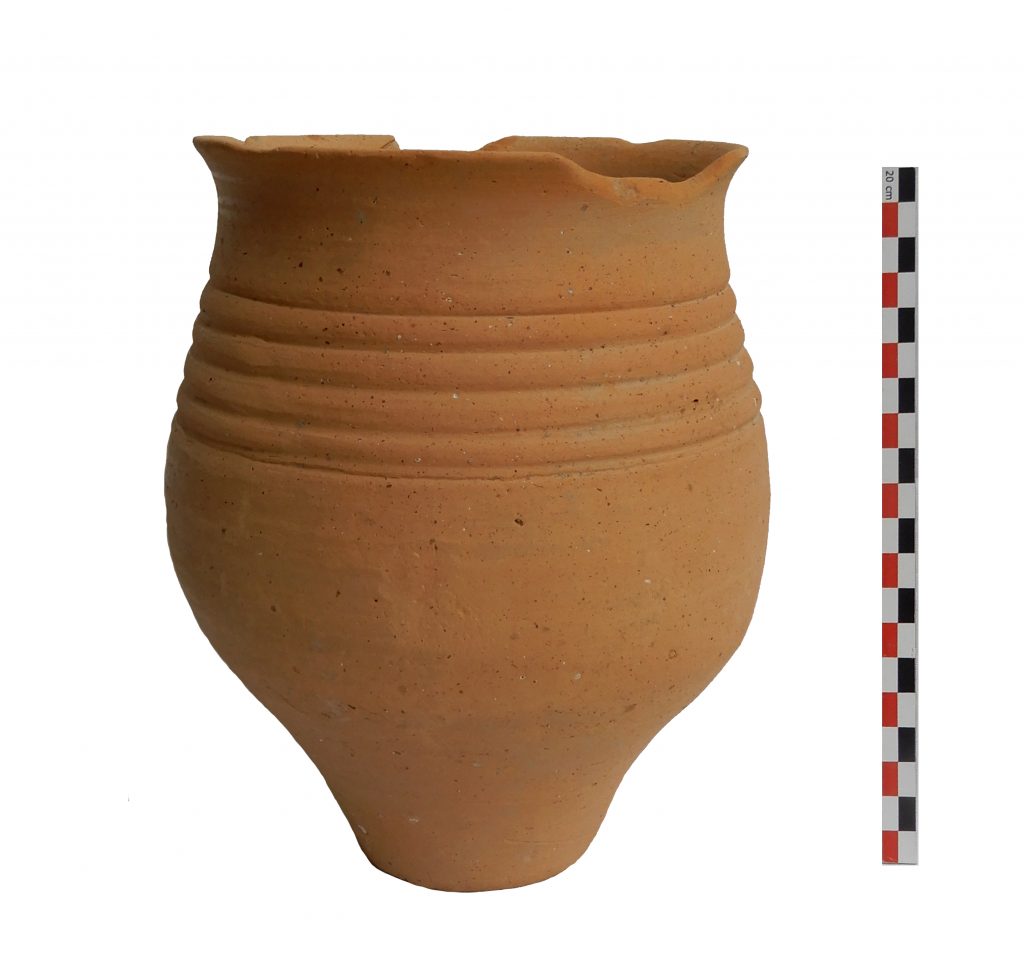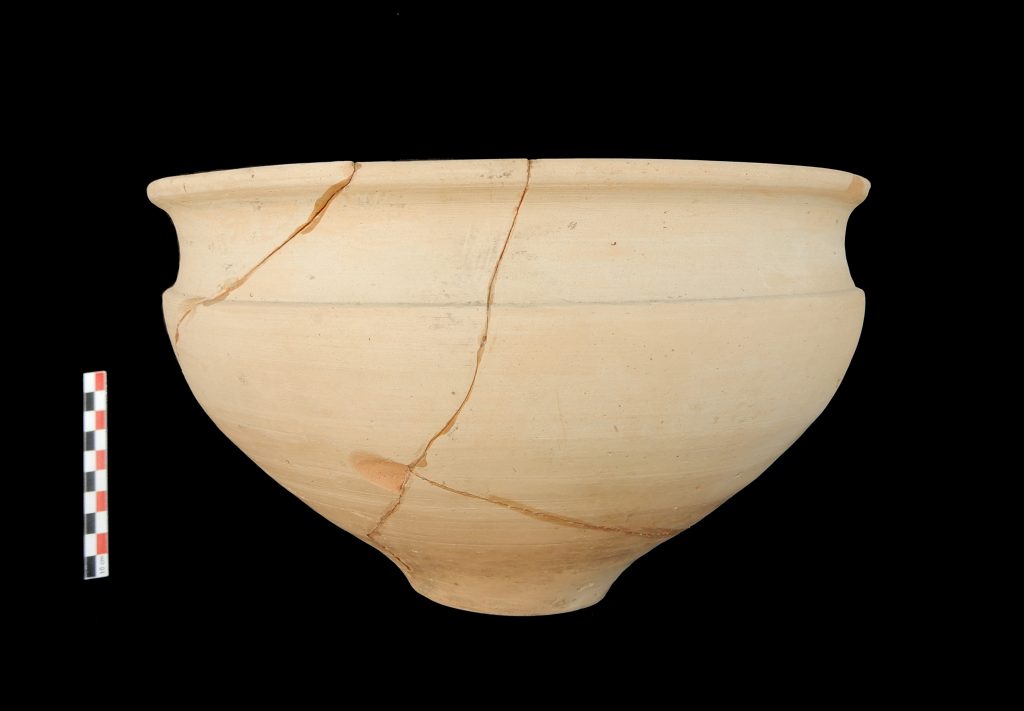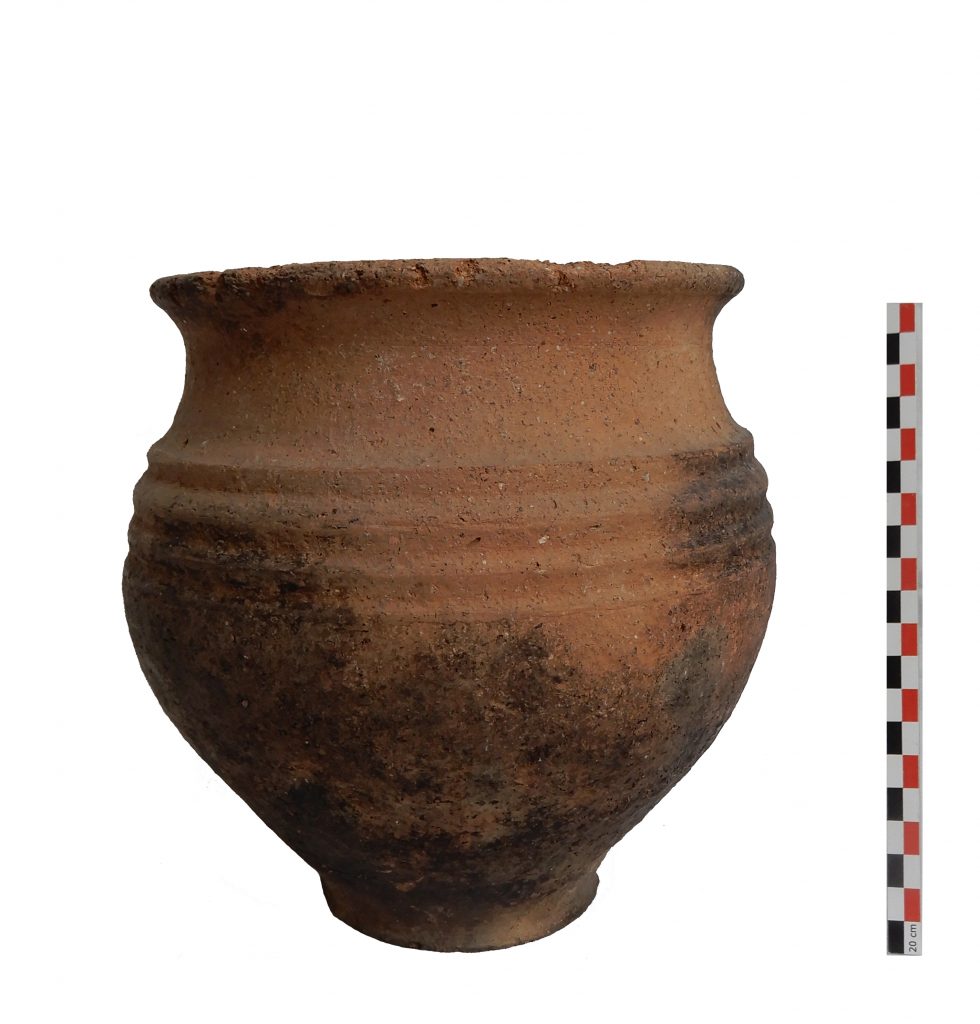English version below. Der bronzezeitliche Friedhof von Kumsaj liegt auf den Lösshügeln des Hissar-Tals. Einzigartig für Zentralasien ist, dass es hier sowohl Gräber mit Material aus der Andronovo-Tradition als auch Gräber mit Beigaben der Oxus-Tradition gibt. Einige Gräber zeigen die Vermischung beider Traditionen.

Landscape of the Hissar Valley with the view of Kumsaj from the South.
(Foto: E. Luneau)

Wheel-shaped bowl typical for the Oxus Civilization.
(Foto: E. Luneau)

Handmade pot with decoration of grooves related to the Andronovo culture.
(Foto: E. Luneau)

Auf der Drehscheibe gefertigter Topf mit Rillendekor. /
Wheel-shaped pot with decoration of grooves.
(Foto: E. Luneau)
The Bronze Age graveyard of Kumsaj located on the loess hills of the Hissar valley revealed a singular configuration in Central Asia. Graves with material related to the Andronovo tradition coexist with graves of the Oxus tradition. Some graves also show the blending of both traditions.
Beitrag von: Elise Luneau, Yuri Kutimov, Tatjana Germanovna Filimonova
Kooperationspartner:
Akhmadi Donish Institut für Geschichte, Archäologie und Ethnographie, Akademie der Wissenschaften der Republik TadschikistanInstitute for the History of Material Culture, Russian Academy of Sciences
Förderung: Deutsche Forschungsgemeinschaft